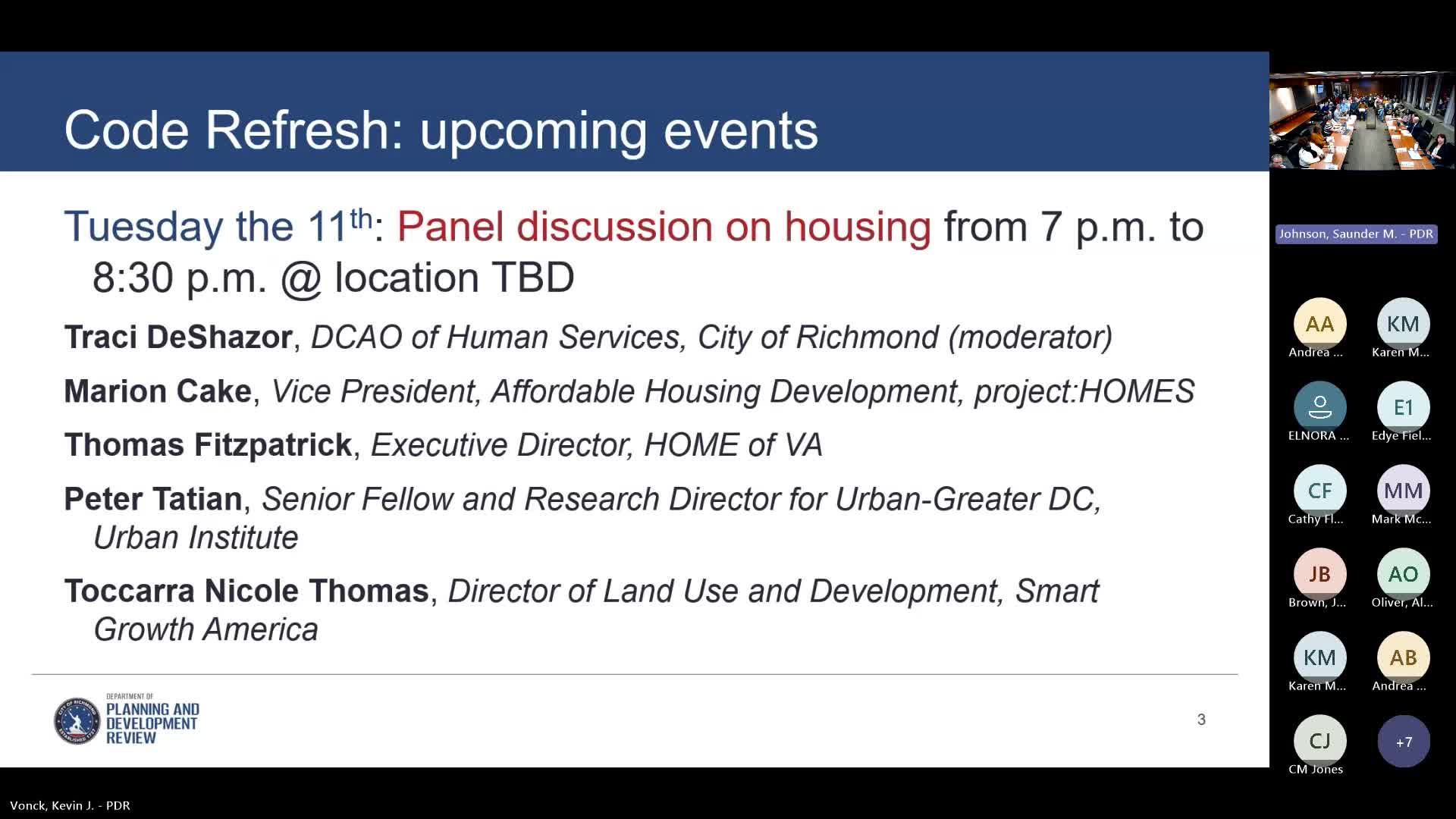Richmond Planning Commission Reviews Controversial 7100 Jank Road Development Proposal
October 02, 2025 | Richmond City (Independent City), Virginia
This article was created by AI summarizing key points discussed. AI makes mistakes, so for full details and context, please refer to the video of the full meeting. Please report any errors so we can fix them. Report an error »

Richmond City officials are taking significant steps to address the grocery store shortage in underserved neighborhoods, particularly on the South Side. During a recent meeting, city representatives discussed the feasibility of establishing grocery stores in areas that currently lack access to fresh food options.
The conversation was sparked by a previous inquiry from Commissioner Knight, who sought data on the requirements for supporting grocery stores. City staff presented an analysis indicating that to successfully attract a grocery store, certain benchmarks must be met: a population density of 7,000 people per square mile, a median household income of $55,000, and daily traffic of 20,000 vehicles along the proposed location. However, the analysis revealed that neighborhoods like Oak Grove Hillside and Belt Mead fall short of these criteria, with population densities around 3,700 people per square mile and median incomes of $38,000.
Despite these challenges, city officials expressed optimism about the potential for grocery stores in these areas. They emphasized the importance of ongoing discussions with economic development partners to explore strategies for attracting grocery stores, even if they do not meet all the ideal benchmarks. The city plans to incorporate grocery store feasibility into future development plans, particularly as they update the master plan later this year.
Commissioners also highlighted the necessity of a city policy to ensure grocery stores are accessible within certain community radii, similar to existing policies for recreational facilities. This approach could involve city investment to support grocery store development in areas where the market alone may not suffice.
The meeting underscored a collective commitment to improving food access in Richmond, with officials acknowledging that the challenges faced are not unique to the city. As they move forward, city leaders aim to develop actionable recommendations for the council to facilitate grocery store establishment in underserved neighborhoods, ensuring that all residents have access to essential food resources.
The conversation was sparked by a previous inquiry from Commissioner Knight, who sought data on the requirements for supporting grocery stores. City staff presented an analysis indicating that to successfully attract a grocery store, certain benchmarks must be met: a population density of 7,000 people per square mile, a median household income of $55,000, and daily traffic of 20,000 vehicles along the proposed location. However, the analysis revealed that neighborhoods like Oak Grove Hillside and Belt Mead fall short of these criteria, with population densities around 3,700 people per square mile and median incomes of $38,000.
Despite these challenges, city officials expressed optimism about the potential for grocery stores in these areas. They emphasized the importance of ongoing discussions with economic development partners to explore strategies for attracting grocery stores, even if they do not meet all the ideal benchmarks. The city plans to incorporate grocery store feasibility into future development plans, particularly as they update the master plan later this year.
Commissioners also highlighted the necessity of a city policy to ensure grocery stores are accessible within certain community radii, similar to existing policies for recreational facilities. This approach could involve city investment to support grocery store development in areas where the market alone may not suffice.
The meeting underscored a collective commitment to improving food access in Richmond, with officials acknowledging that the challenges faced are not unique to the city. As they move forward, city leaders aim to develop actionable recommendations for the council to facilitate grocery store establishment in underserved neighborhoods, ensuring that all residents have access to essential food resources.
View full meeting
This article is based on a recent meeting—watch the full video and explore the complete transcript for deeper insights into the discussion.
View full meeting
